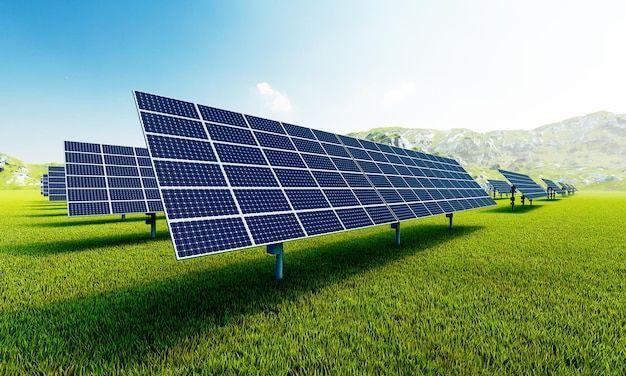PV Solar Panel Market Insights: Long-Term Outlook, Growth Hindrances, and Inhibitors Analysis

The PV solar panel market has emerged as one of the most dynamic sectors within the renewable energy industry. With increasing awareness about climate change and sustainability, the demand for solar power has seen substantial growth. As the world transitions to cleaner energy sources, solar power is positioned to play a pivotal role in the global energy landscape. However, despite its rapid growth, the PV solar panel market faces several challenges that could hinder its long-term potential.
Long-Term Outlook for the PV Solar Panel Market
The long-term outlook for the PV solar panel market is overwhelmingly positive. According to industry reports, the global solar power market is expected to grow at a compound annual growth rate (CAGR) of over 20% in the next decade. This growth is driven by a combination of factors, including government incentives, falling technology costs, and increasing demand for sustainable energy solutions. As the price of solar panels continues to drop due to technological advancements and economies of scale, solar power is becoming more accessible to a wider range of consumers, from residential homeowners to large corporations and utilities.
Additionally, solar technology is evolving rapidly. Innovations such as bifacial panels, which capture sunlight from both sides, and perovskite solar cells, which promise higher efficiency at lower production costs, are expected to enhance the market's potential. Moreover, the integration of solar power with energy storage solutions, such as lithium-ion batteries, will enable solar users to store excess energy for use during non-sunny hours, making solar energy more reliable and appealing.
Growth Hindrances and Inhibitors
While the future looks promising for the PV solar panel market, several key factors pose significant challenges to its growth trajectory.
-
Supply Chain Issues and Material Shortages
The solar panel manufacturing process relies heavily on materials such as silicon, which are in limited supply and can be subject to price fluctuations. Geopolitical tensions, particularly between major producers like China and the United States, have further complicated the global supply chain for PV solar panels. These disruptions have led to delays in production and installation, thereby slowing the growth of the market. Additionally, as the demand for solar panels increases, the supply of key materials such as polysilicon may not be able to keep pace, which could hinder the market’s scalability. -
High Initial Capital Costs
Despite falling prices, the upfront cost of installing a solar energy system, especially for large-scale commercial and industrial applications, remains a significant barrier. The installation of solar panels, along with the necessary energy storage systems and grid integration, can require substantial investment. While the cost of solar panels has decreased, many consumers still find the initial outlay prohibitive, especially in regions where government incentives are limited or non-existent. Without accessible financing options or incentives, adoption can be slow, particularly in developing markets. -
Grid Integration and Intermittency Issues
Another significant inhibitor is the challenge of integrating solar power into existing electricity grids. Solar energy is intermittent, meaning it is not always available when demand peaks, such as during cloudy days or at night. While storage technologies can mitigate this issue, the infrastructure required to store and distribute solar energy efficiently is still in its early stages of development. Many regions still lack the grid infrastructure necessary to handle a large influx of renewable energy, which could slow down the adoption of solar power. -
Regulatory and Policy Uncertainty
Government policies and regulations play a crucial role in the growth of the solar market. In many countries, solar incentives and subsidies have been a significant driver of adoption. However, changes in government policies—such as reductions in subsidies or the imposition of tariffs on solar imports—can negatively impact the market. The level of government support for renewable energy projects remains uncertain in some regions, which could lead to a slowdown in market growth.
Conclusion
The PV solar panel market has a bright future, driven by technological advancements, growing environmental concerns, and increasing government support. However, challenges such as material shortages, high initial costs, grid integration issues, and policy uncertainties must be addressed to sustain long-term growth. As the industry navigates these challenges and innovations continue to emerge, the market is likely to evolve into a more reliable, efficient, and widespread energy solution for the future.
- Art
- Causes
- Crafts
- Dance
- Drinks
- Film
- Fitness
- Food
- Jogos
- Gardening
- Health
- Início
- Literature
- Music
- Networking
- Outro
- Party
- Religion
- Shopping
- Sports
- Theater
- Wellness


